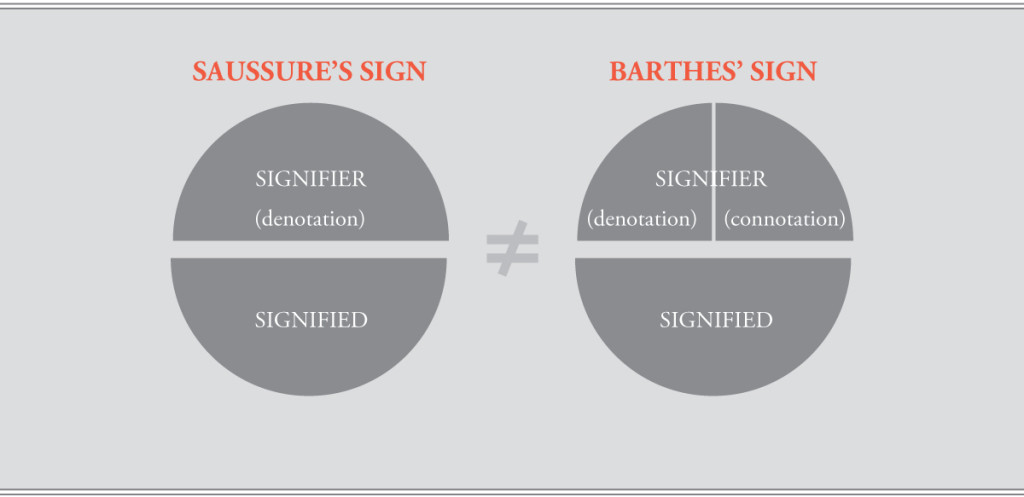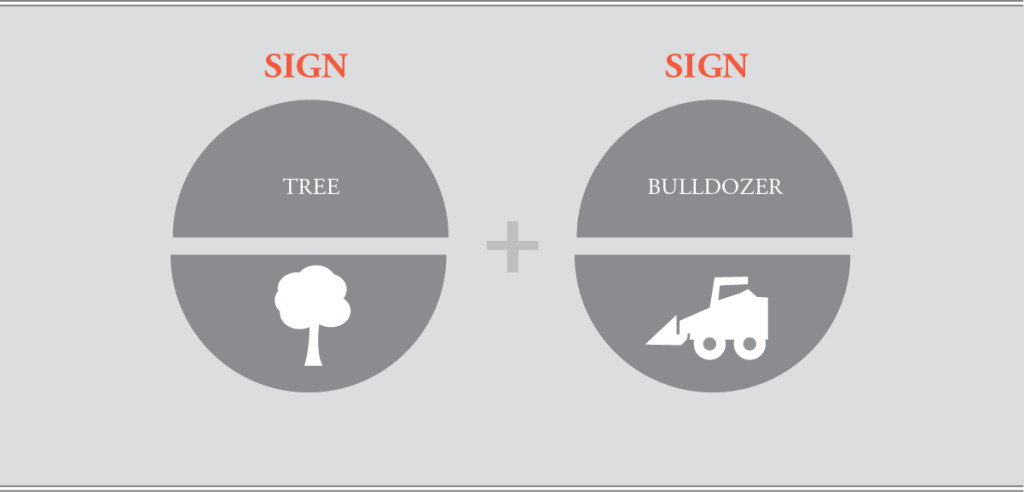Before jumping into this post I will give a quick overview of the last two posts on theory as they will offer context for this discussion.
1) The human mind processes information at low to high levels of consciousness. Some messages, like this sentence, need intense thinking to decode their meaning, while other messages, like knowing an “s” is the letter s, need less intense thinking. We can increase visual design efficiency by addressing the correct visual design components to the message receiver’s proper mental processing levels.
2) Dual-coding theory says that humans have two main mental processing systems: one for language (or text), and one for images (or visual events). We process these two streams of consciousness simultaneously, sometimes completely separately, like when you sing a song while driving your car. Other times, the systems work together, like when you read an illustrated instruction manual. If we are sympathetic towards the brain’s dual coding, we can strategically develop designs that combine text and images in a way that improves the mind’s ability to create meaning. This could further increase visual design efficiency.
We use visual and linguistic streams of thought and think at different levels. But this only explains how are minds handle mental information. What is the information being handled? What are thoughts made of?
SEMIOTICS
For a long time, language was viewed as a naming-process where a real thing (such as a tree) was assigned a corresponding word, such as tree. The property of language was simple denotation. But according to the Swiss professor and linguistics theorist, Ferdinand de Saussure, the nature of meaning isn’t as simple as this means that, but is a psychologically based process, communicated through “signs”. The fact that most languages have a different word for similar thing, suggests this is true. Names for things are arbitrary, different between different languages, but we all know what these things are.
What humans have in common is that they give an idea, like the idea of a tree, a label, which we can call a sound-image. This could be the text tree, or the word tree, or even a visual icon for a tree, which refers to the concept of a tree. To Saussure, a sign is a two-sided psychological entity, represented on the left side of figure 1 [1].

Figure 1. A sign is created from a concept and a sound-image together.
Saussure renames these the signified and the signifier.
(Adapted from Saussure, 1966, pp. 66, 114)
Saussure redefines the concept as the signified, and the sound-image as the signifier. In his system, the signifier and the signified combine to form the sign (the word tree and the concept of tree combine to form the sign, tree), as shown on the right of figure 1.
However, the American linguist, Charles Hockett, points out that a system of signs can be constructed from just about anything
Paul Revere and his unnamed friend agreed that one light in the Old North Church should signify that the British were approaching by land, two lights that they were coming by sea.[2]
Hockett’s example shows that anything that can be controlled or predicted, and can be seen, heard, or sensed in any way, can be adopted as a sign. Designers do precisely this, using various sign systems , and often, mixing various sign systems together.
About 50 years after Saussure’s death, Roland Barthes, the French semiotics theorist, further evolved Saussure’s concept of signs. Barthes saw that the meaning of a sign is not governed by it’s literal meaning alone, but also by its connotation as well (see figure 2).

Figure 2. Barthes noted that signs employ connotation as well as simple denotation
to create meaning.
(Adapted from Saussure, 1966, p.114)
Connotations can come from a single sign, or groups of signs. Several signs may combine to represent one idea, and the way the connotation is interpreted depends on the personal perspective of the individual [3], as shown in figure 3.

Figure 3. From different perspectives, such as an environmentalist’s, or a land developer’s
perspective, this combination of signs may have a positive or negative connotation.
While this discussion is not meant to describe the state of today’s cognitive science research, it can offer visual communication designers a usable framework to address how humans think. Our brains employ two main streams of thought, one visual and one linguistic. Mental processing is carried out within the mind at various levels of processing intensity. The stuff that our minds use to create meaning are signs – psychological entities that have simple meanings, and can string together to create complex ideas. And these ideas are not just denotations that everyone agrees on, but are swayed through connotations, informed by our personalities and our culture.
Signs are the basic building blocks of design. Visual communication design is the manipulation of signs.
1. Saussure, F. d. (1966). Course in general linguistics. (p.66).(W. Baskin, Trans.). New York, NY: McGaw-Hill. (Original work published 1916).
2. Hockett, C. F. (1958). A course in modern linguistics. (p. 307). New York, NY: MacMillan.
3. Barthes, R. (1967). Elements of semiology (A. Lavers & C. Smith, Trans.). (p. 89). New York, NY: Hill and Wang. (Original work published 1964).





Connotation and Denotation … she briefly described denotation as the literal meaning and connotation as the emotional weight of a word, …
Semiotics (also called semiotic … the Philosophy of Language , has argued that semiotic theories are implicit in … of Signs and Semiotic Systems …
Connotation vs Denotation English language has hundreds of thousands of words and each word has other words that stand very close to its meaning. These words are …
Connotation and Denotation Connotation and denotation are not two separate things/signs. They are two aspects/ elements of a sign, and the connotative meanings of a word exist together with the denotative meanings]. − Connotation represents the various social overtones, cultural implications, or emotional meanings associated with a sign.
Saussure’s status in contemporary theoretical linguistics, however, is much diminished, with many key positions now dated or subject to challenge, but post-structuralist 21st-century reception remains more open to Saussure’s influence. His main contribution to structuralism was …
Ref A: D6337AD846BE4D6CB11FBA658553C58C Ref B: HK2EDGE0922 Ref C: 2019-11-06T23:18:55Z
Ref A: 8FD3DE2580D744E99D79CEB2CC22710C Ref B: HKGEDGE0221 Ref C: 2019-11-07T00:35:14Z
Synonyms for connotation at YourDictionary.com with free online thesaurus, related words , and antonyms. Find another word for connotation